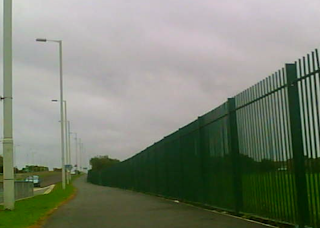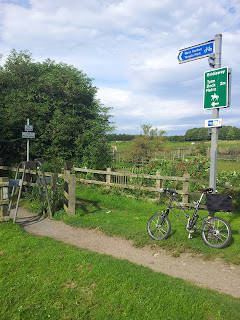They've now produced a second list of ideas from readers which is here, with no indication of popularity, so just seems like a cyclists-kicking exercise for the most part.
Here's my own list which may or may not be so radical.
Convert one lane of urban dual carriageways to mandatory bus and cycle lanes.
This has been a pet thought of mine for a good while. Yes, DCs are busy to capacity for maybe 2 hours a day max. Most of the time they are largely empty space. Turn that space to cycles and busses, and you have instant direct strategic routes which people are familiar with. Yes it will cause a little congestion at first, but as people migrate from cars it will reduce. We all know that more lanes = more congestion. So lets try fewer. Turns out Brighton has tried it and it really worksAllow pupil transport to schools by permit only
Too many schools insist on "contracts" and permits for cycling to school. Turn that on it's head and insist that children can only be transported by car with prior approval for sound reasons. This should reduce car levels to near what they are in school holidays which will also cut congestion for everyone else. Fewer cars = lower risk. A passive/aggressive approach to cycling safety with many many other benefits as wellIntroduce Strict or Presumed liability
Presumed liability puts the liability and a strict duty of care automatically onto the larger party. So if a vehicle collides with a cyclist it is assumed to be the drivers liability unless investigations prove otherwise. This is already law across virtually all of Europe, and is standard in criminal and health and safety cases. It also protects pedestrians on the odd occasion cyclists run into them.Enforce and strengthen road traffic law and penalties
Lets face it, on the roads you can just about get away with murder, and they have become a lawless mess. Anti social road use annoys a lot and affects a lot more. Get the police to crackdown on it. Accept unedited videos and photos as evidence, and toughen up the penalties. Most speeders and mobile users know that what they are doing is wrong and dangerous, but know the chance of being caught is very slim and the penalties are a joke. Stronger enforcement with instant bans and vehicle seizure, not just impounding, but total confiscation. Also illegal parking should be a points offence, not just a few quid which can be cheaper in some cases than the penalty. Make civil parking charges by licenced enforcers like council wardens legally binding to stop the daft evadement where drivers ignore them or argue legality.Target cyclists for no lights and obvious traffic violations, but not to give dubious safety advice, and daft stuff like pedal reflectors
Give cycle lanes/paths proper priority
Most cycle lanes parallel to main roads often give way to everything, driveways, car parks, minor roads etc. It is about time these were reversed and the cycle path given the same priority as the major road at the same junction. Where visibility is limited then this should be a stop line, not just give wayMake most one-ways protected cycle contraflows
Many one way systems are put in place just to control or restrict the flow and direction of vehicles. Often the obstructed route would be shorter and safer for the cyclists.These should be legal for contraflow cycling unless specifically banned for safety reasons. Where possible provide protected seperated space. Same applies to bus only lanes as well.













































